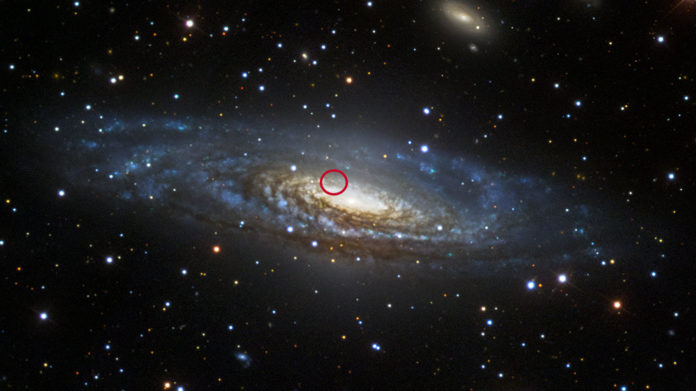In 2014, astronomers detected a sudden bright spot in the sky. They were sure that the spot must be a star explosion. After its detection, astronomers from worldwide started following it with telescopes. This stellar explosion is continuing to evolve even as scientists watch.
Using several telescopes, scientists observed how it evolves. They also deduced the physical characteristics of the system. They named this system 2014C. It is a photometrically and spectroscopically normal stripped-envelope supernova of Type Ib that showed little photospheric evidence for hydrogen but substantial evidence for helium.
In a recent study, scientists analyze the aftermath of the 2014 supernova. They uncovered new clues about a mysterious stellar explosion that could help them determine the process of how massive stars live and die.
The team includes astronomers from the University of Chicago and the University of Texas at Austin.
2014C was most likely once two stars orbiting each other, one larger than the other, according to scientists. The more massive star grew faster, expanded, and the hydrogen in its outer layer was dragged away. The core imploded when it ran out of fuel, resulting in a massive explosion. Observations in the first 500 days following the explosion, however, revealed that it was generating more X-rays over time, which was rare and only seen in a few supernovae.
Vikram Dwarkadas, University of Chicago research professor of astronomy and astrophysics, said, “It suggested that the shockwave was interacting with dense material.”
The team decided to gather all the data on 2014C from studies over the past eight years. The increasing and diminishing patterns were seen in X-ray emissions, infrared light, and radio waves. Meanwhile, as measured by the Hobby-Eberly Telescope at UT Austin, the optical light appeared to remain stable. The shockwave was expanding fast according to the radio signal, while the optical light indicated a much slower speed.
According to scientists, the odd behavior had to do with a dense cloud of hydrogen around the two stars leftover from earlier in their lifetimes.
The stellar explosion generated a shockwave traveling at something like 67 million miles per hour in all directions. Once the shockwave reached the cloud, its behavior would be affected by how the cloud was shaped.
Dwarkadas said, “In the simplest model, this cloud would be assumed to be spherical and symmetrical. However, if the cloud had formed a “donut” around the two stars—that is, thicker around the middle—the thicker part of the ring would slow down the shockwave, showing up in the optical light as slower-moving material. Meanwhile, in the thinner areas, the shockwave would rush forward, as seen in the radio waves.”
Scientists noted, “Questions remain, but this unevenness could account for the different speeds of the shockwave indicated by the different wavelengths. The study provided valuable clues as to the evolution of these stars and mass lost from these systems, and in a larger sense to the lives and deaths of these relatively mysterious stars.”
UT Austin professor and team member J. Craig Wheeler said, “In a broad sense, the question of how massive stars lose their mass is the big scientific question we were pursuing. How much mass? Where is it? When was it ejected? By what physical process? Those were the macro questions we were going after.”
“And 2014C just turned out to be a single significant event illustrating the process.”
Journal Reference:
- Benjamin P. Thomas, J. Craig Wheeler, et al. Seven Years of SN 2014C: a Multi-Wavelength Synthesis of an Extraordinary Supernova. DOI: 10.48550/arXiv.2203.12747
